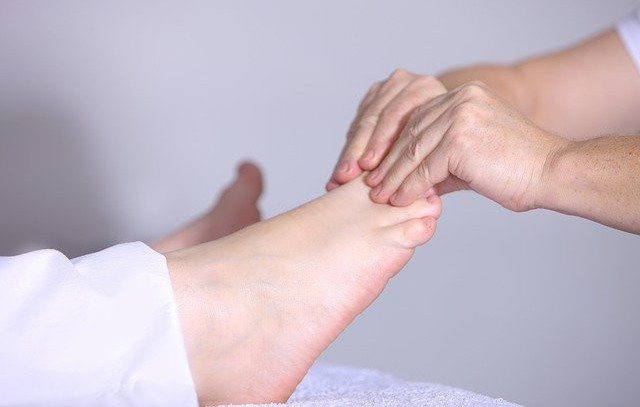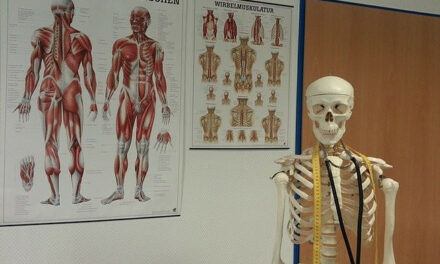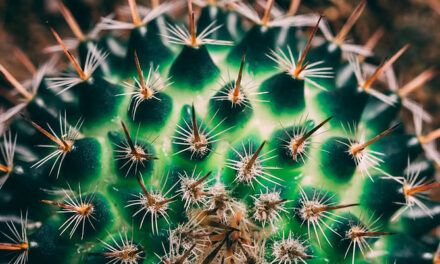Of all the body parts, the feet have the most important job of supporting the body using a complex structure of bones, muscles, joints and soft tissues, making it possible for us to stand, walk, run, dance, and jump. However, the health of the feet is most often overlooked and taken for granted. Foot injuries that are not properly addressed can result in considerable functional disability and have a negative impact in carrying out daily activities. Corns and Bunions are two of such easily ignored foot conditions. Here we will explore the Best Essential Oils for Corns and Bunions.
Knowing how to quickly identify and treat common foot problems will help you address the issues before they get serious, saving you a lot of pain and money in the process. As such, we will look into the severity of Corns and Bunions and when you should seek medical attention to them as well.
This article will also provide you with a guide on common corns and bunions in people with diabetes and how to treat them.
Let’s start by defining corns…
What are Corns?
A corn is a thickened layer of skin that occurs at the top of the foot or in between the toes due to pressure buildup. This ‘benign’ condition occurs as a protective mechanism by the skin in response to constant pressure and friction which can be caused by wearing ill-fitting shoes (shoes that are too tight, too loose and high heels), not wearing socks, standing or walking for a long period of time.
For most people, simply eliminating the source of pressure or friction usually makes the corns disappear. Still, for people with Diabetes, corns can carry a greater risk of complications as Diabetes already causes poor blood circulation to the feet.
Foot corns can easily be prevented by wearing properly fitted shoes, wearing of thick socks when breaking in new shoes and trimming your toenails, as long toe nails can cause your toes to bend in an abnormal position.
Now let’s find out about Bunions.
What are Bunions?
A bunion, medically known as hallux valgus, is a bony bump that forms on the joint at the base of the big toe. It is a deformity of the forefoot, causing the big toe to bend or drift towards the second toe.
Bunions occur as a result of the prominence of the inner side of the toe, pushing out, causing friction when wearing a shoe leading to the reddened and inflamed skin. As the bunion forms, the metatarsal swings out, forcing the farthest part of the big toe to rest on the second toe.
Bunions involve the abnormal movement of all three bones of the big toe and the joints in the middle.
The occurrence of a bunion can be greatly influenced by genetics. Still, it can also be caused by the
- Type of shoes you wear (high heels or ill-fitting shoes),
- Activities you engage in,
- Past injuries,
- Rheumatoid arthritis,
- The shape of your feet,
- Deformities present at birth.
Bunions come in all sizes and shapes and can be very painful, ranging from mild to severe.

The likelihood of developing a bunion can be reduced by
- Paying close attention to your feet and
- Wearing good shoes, avoiding pointy shoes or shoes that do not provide enough room for your toes.
Tip: Wear diabetes-friendly shoes to avoid corns and bunions.
Differences Between Corns and Bunions
| Corns | Bunions | |
| What is it? | A response to abnormal pressure or constant friction | A bony bump |
| Location | The big toe | Top, side or in between toes or wherever there is an excessive amount of pressure |
| Cause | Friction from ill-fitting shoes | Hereditary, ill-fitting shoes, the shape of feet, rheumatoid arthritis, abnormal foot functions, and past injuries. |
| Treatment |
Soaking in warm water and gently filing away the hardened skin with a pumice stone. Using over-the-counter medications. Wearing proper shoes. |
Surgery |
| Reoccurrence | Can reoccur easily | Rare after the treatment |
- A Corn is a growth of skin in response to abnormal pressure or constant friction. A Bunion is a bony bump which forms on the joint at the base of the big toe.
- Bunions are very specific to the big toe. The joint of the big toe spreads outward causing a bump to form and forcing the big toe to overlap and rest on the second toe. In contrast, Corns are often formed at the top, side or in between toes or wherever there is an excessive amount of pressure.
- Corns occurs as a result of friction from ill-fitting shoes. Bunions can occur as a result of a combination of hereditary, ill-fitting shoes, the shape of feet, rheumatoid arthritis, abnormal foot functions, and past injuries.
- The only effective way of getting rid of a bunion is surgery. Corns are skin conditions and can be treated by simply soaking your foot in warm water and gently filing away the hardened skin with a pumice stone, or using over-the-counter medications and wearing proper shoes.
- Corns can reoccur if the primary cause is not properly addressed, Bunions rarely reoccur after surgery has been done to correct it.

Tip: Darco Offloading shoes are recommended for bunions.
Similarities Between Corns and Bunions
- They are both foot problems which can occur as a result of abnormal pressure placed on the feet.
- They can both be very painful, ranging from mild to severe.
- They can both be prevented by wearing properly fitted shoes that allows enough rooms for all the toes and avoiding high heels and pointy shoes.
Can Corns Turn Into Bunions?
Although both are foot problems, Corns cannot result in Bunions as Corns basically is a skin problem caused by excessive pressure. In contrast, Bunions is a type of bony deformity.
However, a Bunion on the big toe causes pressure on the other toes causing them to be bent and can result in Corns and Hammertoes.
How Do You Treat Corns and Bunions?
Treatment for Corns
If you are sure you have a corn, you can try some of these home remedies to manage it.
- Remove and avoid using ill-fitting shoes (shoes that are too tight or too loose), and wear the right kind of shoes.
- Soak your feet in a warm bath with Epsom salt, this will help to soften the skin, and you can easily remove the dead skin cells with a pumice stone or Emery board (nail file).
- You can also instead of buffing off the skin with a pumice stone, apply castor oil to your foot. This will help to soften and remove the corns over several weeks.
- Over-the-counter medication pads containing salicylic acid also be used for fast results in two weeks.
- If all home remedies fail, you should visit a podiatrist, who may scrape and shave off the corns.
Treatment for Bunions
Treatment for Bunions includes;
- The first step of providing relief is by wearing the right kind of shoes that ensures enough room for all your toes and conforms to the shape of your foot.
Examples include sandals, athletic shoes, shoes made from soft leather.
- Wearing of toe-splints at night to help to hold the toe straight and ease discomfort.
- Nonsteroidal anti-inflammatory drugs, e.g. Ibuprofen, and ice packs, can be used to relieve pain.
- If all conservative treatment fails at relieving pain, surgery may be done to correct toe deformity.

Tip: Pressure-relieving heel protectors can help you with corns and bunions too.
Which Type of Doctors Treat Corns and Bunions?
A doctor that provides medical diagnosis and treatment for foot problems including Corns, Bunions, Ankle problems such as sprains, twists, hammertoes, ingrown toes and calluses is known as a Podiatrist.
Tip: Do you know the differences between calluses and warts? Both of those are common among diabetics too.
Due to a rapidly aging population, Podiatrists are more in demand than ever. Podiatrists helps to consult with patients and other physicians to prevent foot problems.
A certified Dermatologist or Orthopedist can also treat Corns as it is a skin problem.
Are People With Diabetes Prone To Corns and Bunions?
For people with diabetes, foot problems may occur more commonly, or can be further complicated due to decreased sensitivity caused by
- nerve damage,
- poor blood flow to the feet,
- lack of oxygen delivery to the feet and
- vascular damage.
People with diabetes also have an increased risk of damage to feet and ulcers.
Diabetes foot-related problems can be maintained and prevented by controlling the blood glucose levels, daily attention to your feet to check for cuts, scrapes or bruises and also taking appropriate care of your feet.
Natural Remedies for Corns and Bunions
If you’re absolutely sure you have a corn or bunion, you can save a trip to the doctor’s office by trying these simple to follow home remedies for your Corns and Bunions. However, you should pay close attention to your feet and contact your doctor to rule out any other feet problems -after all a healthy feet is crucial for a healthy life.
Natural remedies that can be tried at home includes:
- Soak your feet in a warm soapy water bath
This helps to soften the thickened skin of the corns and makes it easier for the dead skin cells to be removed.
- After the bath, you can use a pumice stone or an emery board (nail file) to gently thin away from the toughened skin. Be gentle with your skin and do not use any sharp objects. For people with Diabetes, a pumice stone should be avoided.
- It is important to always moisturize, as it keeps the skin soft and supple.
- Avoid wearing ill-fitting shoes, as that can cause your corns to keep recurring.
- Use over the counter-pads
A nonprescription corn pad can be gently placed over the area where the corn developed. However, care should be taken as it contains salicylic acid, which can irritate healthy skin and cause infections, especially in people with Diabetes and other conditions with poor blood flow.
- Use an overnight Bunion splint
This helps to gently move your toe back to its proper position.
- Over the counter painkillers and applying ice to the feet can help reduce the inflammation caused by a Bunion. For permanent removal of a bunion, surgery should be carried out.
Essential Oils for Corns and Bunions
Corns and Bunions are often times very painful and requires immediate attention. Topical over-the-counter medications are available to provide relief and treat the condition.
However, the topical over-the-counter medications often times contains salicylic acid, which works by dissolving keratin (a protein which makes up the Corns and Bunions as well as the layer of dead skin cells).
Salicylic acid is considered safe in most people, but it should be avoided by people with poor blood circulation such as Diabetes and in pregnant women. That is because it can irritate the skin around the Corn or Bunions leading to ulcers beneath the skin which can become infected.
An alternate treatment is the use of essential oils for treatment as it provides a safer and gentler solution with fewer side effects.
Essential Oils are super-concentrated oils extracted from plants, flowers, seeds, fruits which captures the “essence” of the plants it comes from.
Essential Oils can be
- added topically to the skin by massage,
- in a diffuser and breathed in,
- added in bath water, or
- as a spray.
How To Use Essential Oils for Corns and Bunions
Essential oils can be used to treat Corns and Bunions in the various ways listed below.
-
Essential oils as foot massage
You can massage your feet using 4 drops of lavender oil, diluted in 2 drops of jojoba oil and apply daily to the affected foot.
You can also apply drops of undiluted tea tree oil or lavender oil directly on the Corn or bunion.
-
Essential oil as a foot cream
Essential oils such as frankincense, sandalwood or geranium can be added to your melted beeswax by simply microwaving it, mixing it together and left to thicken. The mixture can be applied daily to your feet.
-
Essential oils as a foot powder
Homemade foot powder can be made using;
Ø 5 drops of Cinnamon oil
Ø 3 tablespoons of cornstarch
Ø 15 drops of lemon oil
Ø 15drops lemon oil.
The mixture should be kept in an airtight container.
-
Essential oil for a foot soak
Essential oils can be added to a warm bath and your feet soaked in it for 10-30 minutes. This method gently softens the skin of the corn, allowing you to buff it off with a pumice stone or an emery board.
This can be done by.
Ø A warm bath.
Ø ¼ cup of Epsom salt
Ø 15drops lavender oil.
Ø 15drops.tea tree oil.
What are the Best Essential Oils for Corns and Bunions?
The best essential oils for Corns and Bunions are oils that provide antibacterial, anti-inflammatory, antifungal, analgesic and therapeutic properties which helps to soothe as well heal the corns and Bunions.
Excellent Essential oils for corns and Bunions includes:
-
Tea tree oil
Tea tree oil has excellent antibacterial, anti-fungal and antiseptic properties. It has been used in the treatment of various skin and hair problems.
Tea tree oil should only be applied topically and used with a carrier oil such as Coconut or Jojoba oil.

-
Garlic oil
For centuries, Garlic has been used in the kitchen as an important spice and also for weight loss due to its amazing properties.
Garlic oil contains vitamins and antioxidants properties that help to fight corns and even bacterial infections that might result from it.
-
Peppermint oil
Peppermint contains menthol which has a sedative and calming effects on bruises and scars and helps in soothing any joint or muscle pain.
-
Lavender oil
Lavender oil has amazing therapeutic properties. It has a soothing effect and used for people with sleep deprivation. It can also be used to get rid of corns in a short amount of time.
-
Oregano oil
This strong-smelling oil has anti-fungal and antibacterial properties and is very potent in treating corns. It should, however, be diluted with a carrier oil before use.
-
Lemon oil
Lemon oil has antibacterial and antifungal properties. It also has a great smell which is soothing.
-
Carrier oils
Carrier oils help to dilute two oils and blend them together to enhance their wellness properties.
-
Coconut oil
Coconut oil has anti-fungal, anti-inflammatory, analgesic properties that helps to blend various oils perfectly.
-
Jojoba oil
Jojoba oil allows for easy absorption of other oils when used topically to massage the skin.
-
Castor oil
Castor oil helps to promote wound healing by stimulating tissue growth and prevent the build-up of dead skin cells that can prevent wound healing.
It is also a great moisturizer.
Best Essential Oil Recipes and Blends for Corns and Bunions
There are more than 3000 recipes and blends for the treatment of Corns and Bunions that are very easy to follow and customized to suit your needs or as a gift for a loved one. You can also create your own recipe.
Some of the very best essential oils recipes for Corns and Bunions are listed below.
For Corns;
- 2 drops myrrh essential oil
- 2 drops blue cypress essential oil
- 7 drops oregano essential oil
- 4 drops basil essential oil
- 1/4 teaspoon carrier oil
One or two drops should be massaged to the Corns daily.
- 7 drops of chamomile essential oil
- 5 drops of garlic oil
- 9 drops of oregano oil
- 3 teaspoons of Epsom salt.
This blend can be used as feet soak.
For Bunions;
- 9 drops Roman chamomile essential oil
- 9 drops carrot seed essential oil
- 2 tablespoons calendula-infused oil
This blend should be massaged on the feet daily.
A complete guide to aromatherapy essential oils for everyday use can be gotten by clicking on this link; https://amzn.to/2GKmf98.
Can You Get Rid of Corns and Bunions Overnight?
Corns and Bunions are not gotten overnight, so they won’t disappear overnight. Corns and Bunions occur as a result of constant pressure and friction and usually takes a while before it is fully formed.
Likewise, treatment of corns takes time, usually up to 2-4 weeks with its appearance slowly fading away. Healing usually depends on how large the corn is, and how often the cause of friction is avoided (e.g. ill-fitting shoes) and the type of treatment used.
If you have corns regularly, it might be the time to give more attention to your feet and change your shoes to more comfortable ones.
If left untreated, Bunions can become very severe and require corrective surgery to be performed for proper shaping and functioning of the affected foot.
Can You Remove Corns and Bunions From the Foot Permanently?
Corns and Bunions can be removed permanently, but treatment requires patience and total removal of the condition that caused them.
Below are tips that can help prevent friction and prevent corns from forming.
- Get properly fitting shoes
While shopping for shoes, it is important to get the right shoe size for you. Ensure to get shoes that are not too tight or too loose.
Buying shoes at the end of the day when your feet is slightly swollen might help in picking the right shoe size for you. Especially, if you have diabetes.
- Keep your toenails short
Keeping your toenails trimmed ensures that your feet are not crowded in your shoes, thereby preventing corns from forming.
- Keeping your feet clean
It is important to wash and moisturize your feet at the end of the day and avoid walking around barefoot. You should also keep a pumice stone handy for a well-deserved foot massage from time to time.
- Use of corn pads
Corn pads are specially designed to help to redistribute pressure, and protect against friction around the corn, thereby providing relief.
Conservative treatments for Bunions includes;
- Toe spacers and bunion splints can be used to realign the feet, but it is only beneficial for as long as you are wearing them.
- Orthotics custom shoes
These shoes help to relieve pressure and also align your feet and redistribute your weight to prevent too much pressure on your Bunion.
- Physical therapy
Physical therapy will help to strengthen your feet and also correct your posture when walking or standing.
However, once formed, Bunions are permanent unless removed by corrective surgery.
Conclusion
Taking good care of your feet is a very vital part of health, as foot diseases and problems can result in pain ranging from mild to severe and sometimes functional disability.
Corns are painful skin bumps that are found in the high-pressure area. It is the body’s response to constant friction. Bunions are bony bump that occurs at the base of the big toe. Bunions result in the big toe resting on the second toe causing discomfort, pain, corns in between the foot and can result in temporary immobility.
Corns and Bunions can be easily treated with homemade remedies recommended by your Podiatrist. The first step to treating Corns and Bunions is getting rid of ill-fitting shoes.
Essential oils can be used alternatively to treat Corns and Bunions, especially for people with poor blood circulation as a safer, gentle, less expensive approach, and they have fewer side effects. You can create your own Essential oil recipe by mixing and diluting several oils with a carrier oil to enhance its beneficial properties.






0 Comments